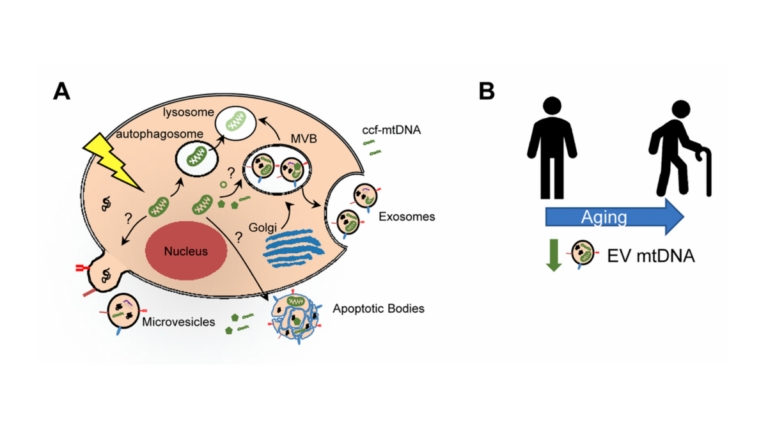Salt Water-Infused Blood Reverses Aging
Aging
August 10, 2021The Top-Performer series highlights papers published by Aging that have generated a high Altmetric attention score. Altmetric scores, located at the top-left of trending Aging papers, provide an at-a-glance indication of the volume and type of online attention the research has received.
Read Aging’s Top 100 Altmetric papers.
—
Scientists have a long history of analyzing the blood in search of the keys to healthy aging. Is it possible for old blood to be “refreshed” in order to rejuvenate youth and combat the effects of aging? In 2020, researchers from the University of California Berkeley and Apheresis Care Group uncovered groundbreaking new insights about the rejuvenation of aging blood with the ability to slow, and potentially to reverse, aging. Their well-read priority research paper was published by Aging and entitled, “Rejuvenation of three germ layers tissues by exchanging old blood plasma with saline-albumin.” To date, this top-performing paper has generated an impressive Altmetric Attention score of 147.
Blood Plasma
Approximately 55% of the body’s total blood volume is composed of a pale yellow liquid—plasma. Plasma largely consists of water (about 92%), with traces of mineral salts, sugars, fats, hormones, and vitamins. This watery substance also contains important proteins, such as immunoglobulin (antibodies), clotting/coagulation factors, and albumin.
“In people, albumin levels correlate with disease, nutrition, and socio-economic status rather than chronological age; and even when health, etc. status are not considered, albumin diminishes only marginally, by 2-4% at 75 years of age from its 26 years of age levels [21–24].”
Plasmapheresis is a general term used to describe procedures that remove, treat, and return or exchange plasma to the blood. Patients with autoimmune diseases, sickle cell disease, certain forms of neuropathy, and even severe cases of malaria, have benefitted from plasmapheresis.
Heterochronic Parabiosis
Heterochronic parabiosis, a plasmapheresis-like procedure, is the surgical joining of two organisms in an effort to study the physiological changes that result from shared blood flow. Researchers have used this model of joining young and old animals together to observe the effects of old blood in young mice, and vice versa. In a 2005 study, University of California Berkeley and Apheresis Care Group researchers found that, through the process of heterochronic parabiosis, old mice sharing blood with young mice initiated rejuvenating effects in old mice.
“The general conclusion of these studies was that the old partners had better health and/or repair of cartilage, muscle, liver, brain, spinal cord, kidneys, bone, skin, etc., and often the young animals experienced premature aging of their respective tissues [1, 3, 4, 6–8].”
However, the same researchers suspected that the rejuvenating effects demonstrated by heterochronic parabiosis were not direct results of youthful factors in the young murine blood itself. They also suspected that the premature aging experienced by the young mice were not due to old factors in the aged blood either. The team proposed that simply diluting the young and old factors in the blood may be the cause of these effects. In 2020, the researchers conducted a new study, this time replacing some blood with saline and albumin, to test their hypothesis.
“Historically, the phenomena of heterochronic parabiosis and blood exchange remained unconfirmed with respect to the key assumption as to whether the addition of young factors is needed for rejuvenation, and if premature aging of young mice stemmed from the introduction of old blood factors or a simple dilution of young factors.”
The Study
In this study, the researchers began by conducting a plasmapheresis procedure in mice called a neutral blood exchange (NBE). Half of the platelet-rich-plasma (PRP) was removed from the blood in young and old mice and replaced with a simple saline and 5% purified albumin solution.
“Through a half-hour long series of small volume exchanges, 50% of the PRP of old and young mice was replaced with saline plus 5% mouse albumin while the circulating red and white blood cells were returned isochronically to the animal.”
Their results showed that a single session of NBE improved regeneration, reduced fibrosis, enhanced myogenesis, and other factors in the old mice. In the young mice, they found that this procedure did not have adverse effects or worsen the aforementioned factors. To verify their findings, the team studied human blood samples from four older individuals (between the ages 65 and 70) and conducted an FDA approved procedure, Therapeutic Plasma Exchange (TPE), using the same saline/albumin solution.
“To confirm these findings and to explore their evolutionary conservation, we took advantage of the fact that there is a procedure for human patients analogous to NBE, where most of the plasma is replaced by physiologic solution supplemented with commercial human albumin, called Therapeutic Plasma Exchange, TPE, which is FDA approved and routinely used in the clinic [16–18].”
Conclusion
In summary, their research found that simply diluting old blood factors with a neutral substance such as saline and albumin contributes to improving muscle repair, attenuating fibrosis, enhancing myogenic proliferation, reducing liver adiposity, and increasing hippocampal neurogenesis. In some areas, they found that these effects were even stronger in TPE results than after heterochronic parabiosis or blood exchange.
“The theoretical significance of this study is in a better understanding of how blood heterochronicity acts to quickly and profoundly rejuvenate old mammals, and the clinical significance of this work is in developing TPE as a new modality to broadly improve organ health and repair in older individuals preventing illnesses that develop or become more severe in later decades of life.”
Click here to read the full priority research paper, published by Aging.
WATCH: MORE AGING VIDEOS ON LABTUBE
—
Aging is an open-access journal that publishes research papers monthly in all fields of aging research and other topics. These papers are available to read at no cost to readers on Aging-us.com. Open-access journals offer information that has the potential to benefit our societies from the inside out and may be shared with friends, neighbors, colleagues, and other researchers, far and wide.
For media inquiries, please contact media@impactjournals.com.

